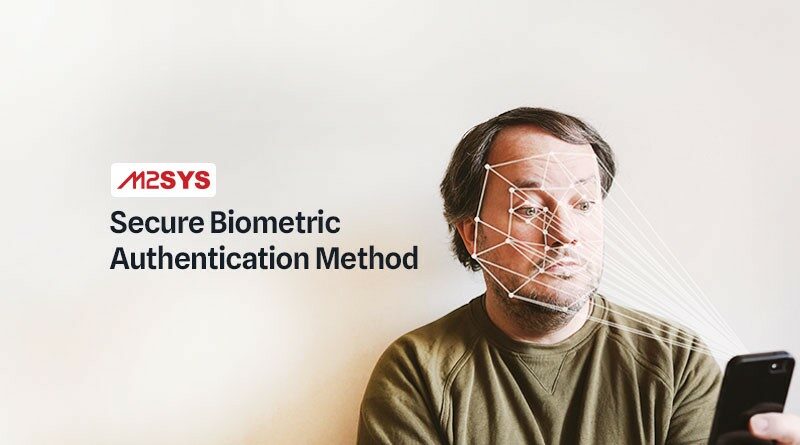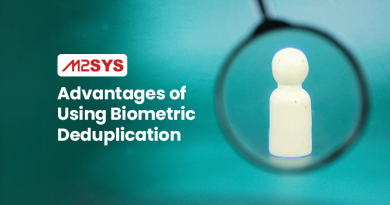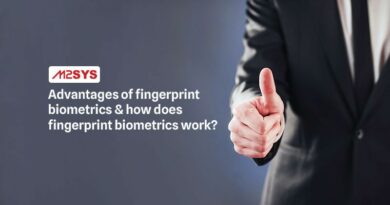Which is the most secure biometric authentication method ?
While the oldest references to biometrics date back to the Babylonian era in 500 BC, the first record of a biometric authentication method was in the 1800s in Paris, France. Alphonse Bertillon developed a technique for classifying and comparing criminals based on unique body measurements. Since then, there have been many developments in the field of biometrics like the cloud biometric solution. Now people are using different biometric authentication methods to eliminate security threats. But can these methods be tampered with? Which one is the most secure? Read to the end to find out.
What Is Biometric Authentication?
Biometric authentication is a security technique that depends on a person’s particular biological traits to validate their identity. Biometric authentication systems compare physical or behavioral characteristics data in a database that has been verified and authenticated. Authentication is validated when both samples of biometric information match with each other. Biometric authentication commonly controls access to physical and digital resources such as facilities, offices, and devices.
Today, there are mainly two types of biometric authentication methods: physiological biometrics and behavioral biometrics. There are also different authentication methods in these classes; for example, Physiological biometrics includes fingerprint, iris, face recognition & Behavioral biometrics provides voice recognition, signature, etc.
Types of Biometric Authentication Methods
To better understand which type of biometric authentication provides the best security, we need to first dig deeper into different approaches. First, let’s discuss the two main kinds, and then we will move into the different authentication approaches.
Physiological Biometrics
Physical characteristics of the human body, such as the face, fingerprint, hand geometry, retina, and iris, are physiological biometrics. A physiological characteristics-based recognition method provides a high degree of precision. Here are a few of the most common Physiological Biometric authentication methods.
1. Fingerprint Recognition
Fingerprint recognition is biometric authentication that matches a user’s fingerprint to a registered fingerprint pattern to verify their identity. Fingerprint scans are an essential intrinsic factor because we are all born with unique fingerprints, making them impossible to predict and difficult to alter or fake.
2. Iris Recognition
The iris is the colorful, donut-shaped part of the eye covering the pupil located behind the cornea. The iris pattern is unique to each individual and does not alter throughout their life. The iris is also highly protected from harm because it is covered by the cornea, making it an ideal body part for biometric authentication.
3. Facial Recognition
Facial recognition is a method used for recognizing or verifying a person’s identification by examining their face. People can be identified in pictures, films, or in real-time by using facial recognition technology.
4. Vein Recognition
The human body’s underlying blood vessels form a unique structure for each individual. Illuminating a physical part with infrared light and capturing the reflected light can be used to identify vein patterns.
In some systems, images of the infrared light transmitted through the photographed body tissue are taken. Veins and arteries consume more infrared light than underlying tissues. Therefore, they seem darker in the photo. Palms, fingers, wrists, and the back of the hand are examples of body parts that can be conveniently presented to the sensor.
Behavioral Biometrics
Behavioral biometrics is an approach that detects observable patterns in human behavior. Keystroke dynamics, gait analysis, cognitive biometrics, and signature analysis are examples of behavioral biometric authentication. Behavioral biometrics is one of the most secure authentication techniques for fraud detection since it analyzes a user’s digital and cognitive capacities. Here are a few of the most common behavioral biometric authentication methods:
1. Voice Recognition
A person’s ability to create a voice is influenced by more than 70 body parts, each unique to the individual. Biometric voice systems extract the traits that differentiate a person’s speech from others’. As a result, a “voiceprint” similar to a fingerprint is created and used to authenticate individuals.
2. Keystroke Recognition
Keystroke recognition, also known as keystroke dynamics, refers to the comprehensive method that defines when each key on a digital device is pushed and released while a person types. Though most biometrics rely on physical qualities like fingerprints, faces and behavioral factors, many people believe keystroke dynamics is also a biometric authentication method.
3. Signature Recognition
Signature recognition is a biometric method in which authentication is based on how an individual writes. Online signature recognition is a dynamic process that considers factors such as writing speed, stylus orientation shift, and the number of pen ups and downs while the signature is being written. Offline signature recognition is a static type of signature recognition in which a sample image of the signature is matched with the provided one.
Most Secure Biometric Authentication Method
So which biometric authentication method is most secure? Is it one of the physiological biometrics or one of the behavioral approaches? The answer is entirely diplomatic, as the term “secure” is relative to industry needs. So the correct answer will depend on the market for the biometric service you want to use.
If we consider the common biometric authentication uses, vein recognition is one of the most secure and easy-to-implement biometric authentication methods. Here are some facts to support this claim:
1. Not Exposed
Unlike the other biometric authentication, the veins in your palm and finger are not exposed like your face or fingerprint. Veins are an internal part of your body that can not be captured without infrared light.
2. No Violation of Privacy
Because palm vein recognition is internal, it provides excellent security benefits and significant privacy benefits. Because consent is the most critical need under privacy laws worldwide, the consent-based palm vein design makes it easy for you to comply with these laws and avoid legal problems.
3. Accurate
Cuts, dry skin, scars, and other issues can make fingerprint readers fail to enroll or verify identity effectively. Taking photos of the vein patterns inside your finger resolves these issues. The Hitachi C1 contactless finger vein reader can be used to capture accurate data, and the false acceptance rate is only 0% – 0.9%
4. Contactless
The best part of Vein Recognition is that it’s contactless, and there is no chance of getting infected by any virus. This is one of the main reasons vein recognition is preferred, as this biometric is perfect for the post-Covid era.
Vein recognition is one of the most secure and easy-to-implement biometric authentication methods that can be applied to any biometric needs. Depending on the needs and industry, authentication methods might vary. If you have any concerns or questions regarding which authentication method best suits your need, get in touch with us today.












Biometrics is a very reliable method of authentication. It gives us more sense of security as we are relying on our own physical features rather than a piece of document or something else that can be counterfeited. Implementing biometrics authentication solutions is one of the best ways to earn customers’ trust. This article is very informative. It has some new information that I didn’t know before.